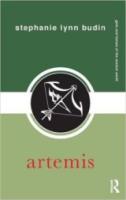
Routledge (2015) h/b 185pp £85 (ISBN 9780415725415)
B.’s book on the Greek goddess Artemis is the latest in Routledge’s series on individual ‘Gods and Heroes of the Ancient World’. She follows in the footsteps of such distinguished contributors as Fritz Graf on Apollo and Richard Seaford on Dionysos. B. uses all types of primary sources, liberally quotes in translation literary texts and inscriptions, and illustrates a limited range of archaeological material, mainly depictions of Artemis in various ancient media. The focus is on the Archaic and Classical periods, although in practice there are frequent forays into later centuries. B. devotes her eight chapters to Bronze Age antecedents; a characterisation of the goddess (the significance of her virginity and of her portrayal as a child in Greek literature and art); discussions of her fields of action (the wilds, children, women, plague and cruelty etc.); and a final chapter on reception. The book is mainly aimed at students of classical studies, and not least of ancient girls and women.
B. helpfully reports on recent work on important aspects of Artemis, such as the role of Euripidean drama in Atticising the myth of Iphigeneia and influencing (in the wrong way) the interpretation of finds from the Artemis-sanctuary at Brauron. She does not just synthesise earlier work but, on many topics, has views of her own, often sensible: e.g. the Romanity of the ‘bloodiness’ of Artemis-rites at Patrae and Sparta, p.139; the weakness of modern claims for Artemis as a baby-tending divinity, ch.4; her emphasis on the deadly side of Artemis, including her role in childbirth, p.113.
The reader needs to exercise some caution, however. For example, B. questions (pp.59-67) the orthodox view, pioneered by Jean-Pierre Vernant, that Artemis was a war goddess. B. counters with the claim that this ‘construct’ comes ‘mainly’ from ‘the Romans’. In fact she means the Greek writers Plutarch and Pausanias. She then asserts (there is no argument) that both these were influenced by ‘lunar Diana’ (p.60). Here, B.’s handling of the sources seems as open to criticism as that of (in her view) Vernant and others. Sometimes, too, the discussion seems under-referenced. It is odd to read an opinionated discussion of the bear-rite at Brauron (pp.77-81) which omits the enigmatic Attic red-figure fragments published by Lily Kahil and the exhaustive work on age-differentiation in (possibly) Brauron-related vase-painting by Christiane Sourvinou-Inwood. I spotted occasional factual errors (e.g. the inscription quoted on p.160 is a decree of the Ephesians, not the Roman proconsul).
B.’s book claims to be written in ‘an accessible style’ (p.xiv; cp. p.xi). Not all readers are likely to relish the jocularity verging on flippancy (e.g. pp.138, 162), or the frequent colloquialisms (my list begins with ‘bitch-slap’ on p.2). A sharper editorial eye should have picked up ‘Attik’ (for ‘Attic’, repeatedly), ‘Korkyra’ (for ‘Kerkyra’, repeatedly); and so on.
In all, here is a book which, despite its good intentions, somewhat disappointed this reader.
Professor Antony Spawforth—Newcastle University
